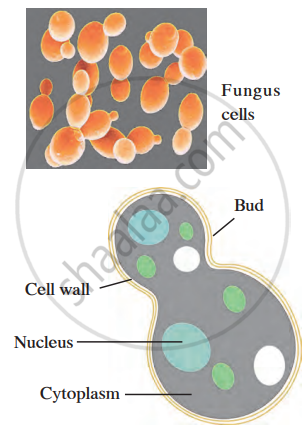1. Aim:
To observe fermentation by yeast and identify yeast cells and budding under a compound microscope.
2. Requirements
Active dry yeast, sugar, lukewarm water, transparent balloon, bottle, limewater, glass slide, coverslip, and compound microscope.
3. Procedure
- Mix one spoonful of dry yeast and two spoonfuls of sugar with lukewarm water in a bottle.
- Attach a transparent balloon to the mouth of the bottle. Observe the balloon after 10 minutes; it inflates as gas accumulates inside.
- Add limewater to the gas in the balloon, collect it in a beaker, and observe. The limewater turns milky, indicating the presence of carbon dioxide.
- Take a drop of the solution from the bottle on a glass slide, place a coverslip, and observe under a microscope.
- Identify colourless, oval yeast cells, some showing budding with small round bodies (daughter cells).

Yeast Cells
4. Conclusion
The balloon inflates as the yeast ferments the sugar, releasing carbon dioxide. The presence of carbon dioxide is confirmed by limewater turning milky. Under the microscope, yeast cells and budding (asexual reproduction) are visible. This experiment demonstrates yeast's role in fermentation and its reproduction process.
